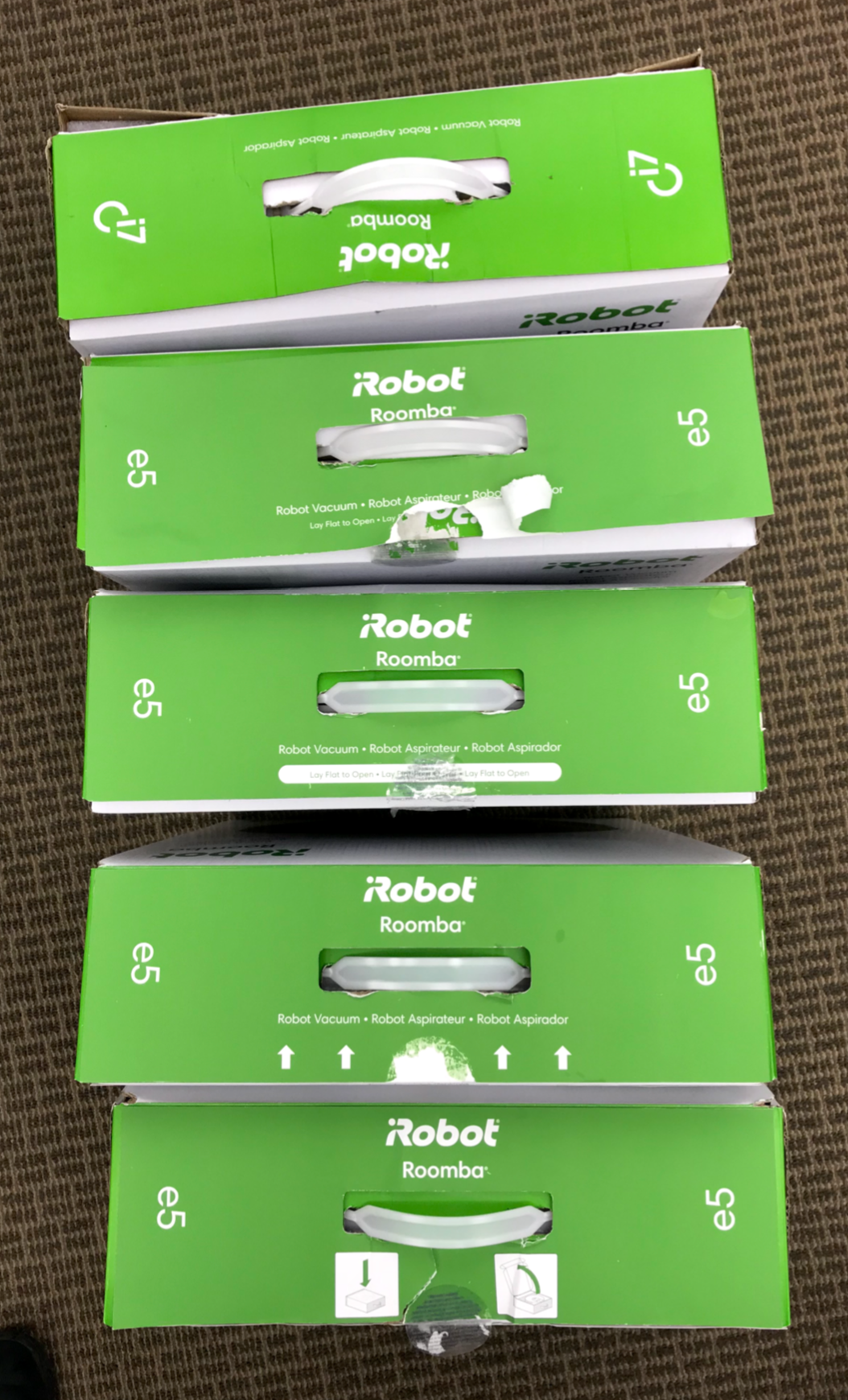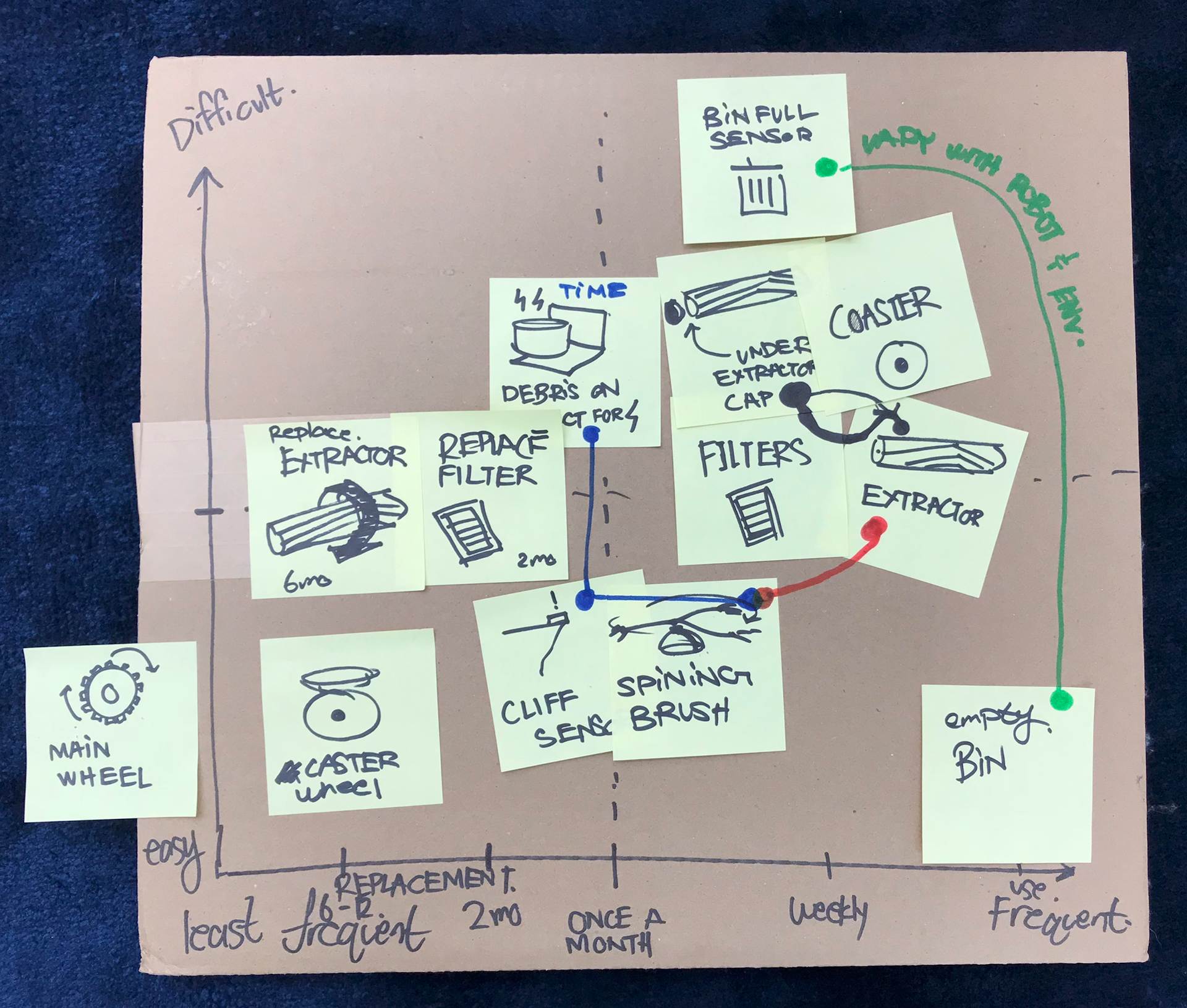Top 3 Lessons from My iRobot UX Internship
While I've learnt a lot of things in design school, experiencing how design is executed in industry is still an invaluable experience. Although I can't go into the specifics of what I did for my internship due to NDA, here are the top 3 lesson I learned during my internship as try to help people take better care of their robots.
1. Design for users' without a mental model of your product.
Struggling to design for an existing mental model only to realize people don't think about robot care.
When I first started working on the care and maintenance experience of the Roomba (a.k.a. how to help people take better care of their robots), I was obsessed with trying to get at the mental model of the user. Is it like bike maintenance, or is it like a pet's health? I contextually observed the user and performed many task analysis, but I never really got at how people thought about robot care. I spent a lot of time trying to wireframe the answer to "how do people think about robot care" until one of the design researchers asked me "what if people don't think about robot care." This shifted my perspective on my design process. Instead of aligning my wireframes to an existing mental model, I was actively creating a mental model with my wireframes. I was shaping how people think about their robots through my interaction designs!
2. TEST the details!

The 5 alteration of the original packaging that I designed and tested to prevent robots from from falling out during unboxing.
During my first week at iRobot, the Design team was informed prelaunch of the new i7 Roomba that many users open iRobot's packaging the wrong way. Opening the packaging the wrong way causes the brand new $900 robot to literally "fall" out of the packaging. As an intern, my task was to explore, design, and test interventions to prevent this problem. I designed 5 different prototypes and quickly mock these boxes up for testing. Some used more salient cues like diagrams, while other subtle suggest orientation via text and EULA sticker placements. All these details add up.
3. Co-Design and amplify other people's ideas.

A collaborative Roomba care/maintenance tasks mapping with Costumer Insights.
Designers are often under pressure to magically come up with ideas to make a product simpler, cleaner, more user-friendly, etc. It's a lot of pressure, and sometimes you end up thinking in circles trying to come up with the best ideas, only to realize that all your ideas are crappy. That was me during my internship. Well, at least part of it until my manager suggested that I seek help from those outside the Design department.
Slowly, I began to work with Customer Insights to understand the ideal frequency and difficulty of all Roomba care tasks. Learning about when things might break allowed me to prevent it in the app. As I refined my wireframes, I began to work with Marketing to ensure that I was not communicating iRobot cleans "for" you but rather "with" you via the app's copy. This help keeps the targeted market segment expectations' realistic. The list goes on, but the point is that all these great ideas aren't coming from me, they're coming from everyone else in the company who isn't "formally doing UX." As a UX Design Intern, my job slowly shifted away "trying to come up with the best idea ever" towards simply becoming a translator and mixer of other experts' great ideas into wireframes. I'm glad I reached out for help because I sure would be stumped without them.
This work is under NDA, to learn more please email:
svitoora@andrew.cmu.edu